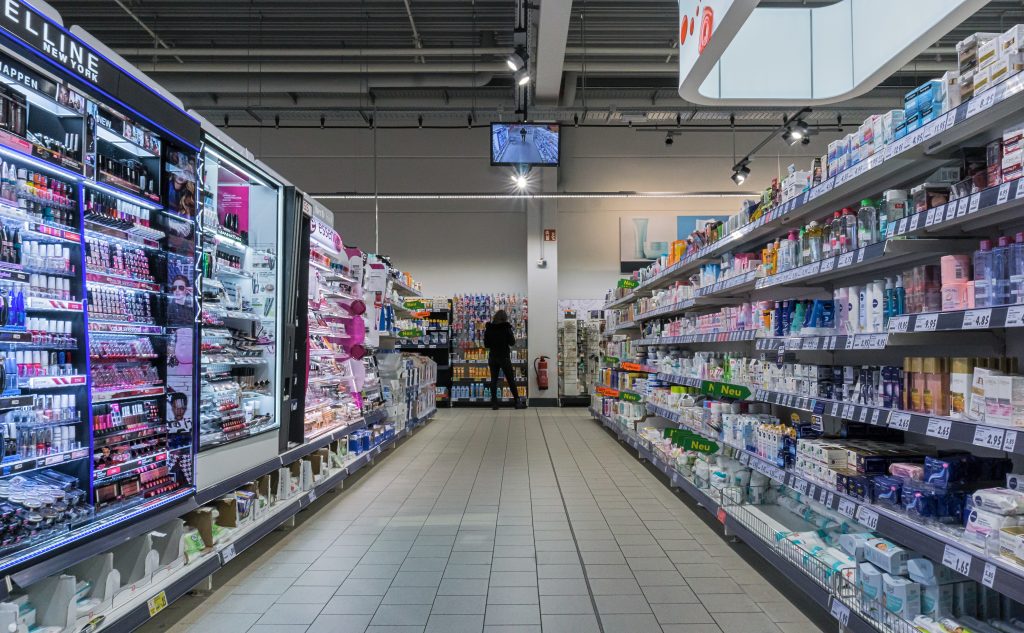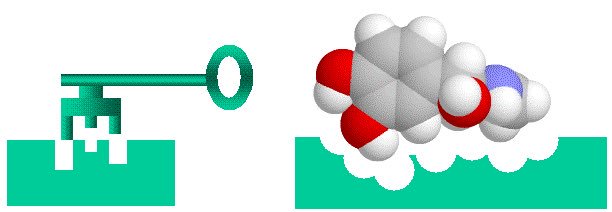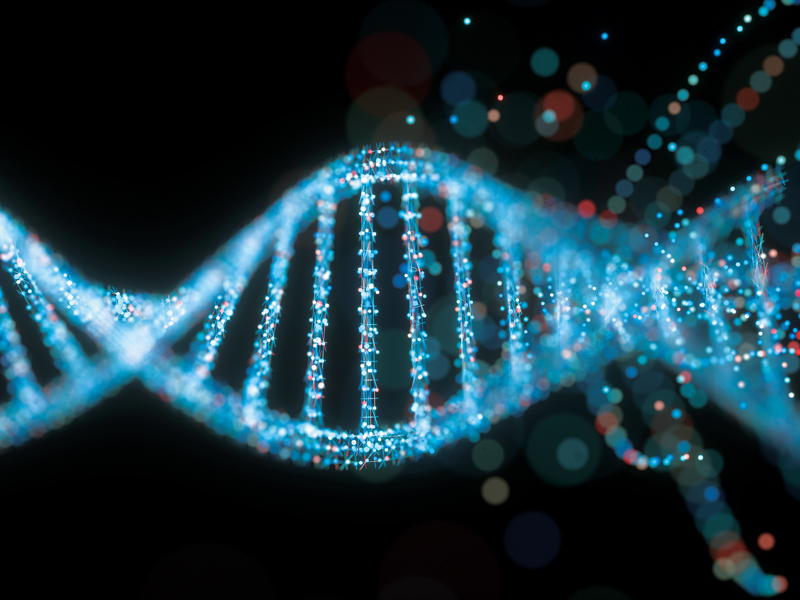Most of us use cosmetic products as a part of our everyday routine – whether it is sunscreen to protect our skin from the sun’s harmful rays; moisturizer to protect our skin from the harsh winter weather; or makeup for our faces, we almost cannot live without them. Since cosmetic products have become such an integral part of our lives, marketed as something helpful and beneficial, we mostly trust the government regulating bodies and companies to protect us from any known harmful toxins or chemicals.

Creative Commons Licensed
However, the process of proving toxicity in humans can be complicated. Knowing that chemicals affect different people in different ways, researchers recently took a new approach to studying the effects of two common chemicals used in cosmetics and sunscreens on the cells in the breast.
“Ultimately, they found that these chemicals can cause DNA damage in breast cells at surprisingly low levels, but not in other cells.”
Since damage to our DNA can cause cells to become cancerous, this poses a risk of breast cancer and thus a very big concern for us.
What are these chemicals?
The two chemicals that were tested were the ultraviolet filter benzophenone-3 (BP-3), also known as oxybenzone, which is used in many sunscreens and propylparaben (PP), an antimicrobial preservative found in cosmetics and other personal care products.
“These two compounds are present in many commonly used products.”
PP was detected in the urine samples of more than 96% of U.S. population (from a survey conducted by the CDC). Additionally, BP-3 was found in the urine samples of people who had used sunscreen containing BP-3, suggesting it is readily absorbed through skin. Moreover, BP-3 has been found in the breastmilk of almost 50% of young mothers. The researchers also found that women may have higher exposure to BP-3 during pregnancy due to the increased use of lotions and creams, or that the absorption through the skin and movement through the body of BP-3 is altered during pregnancy.
So WHY are these chemicals bad?
To best understand how these chemicals affect breast cells specifically, we need to understand a little bit about these cells. Breast cells have estrogen receptors

The hormone (estrogen) acts as a key that fits into the lock (estrogen receptor)
(ER) which we can imagine as the ‘lock’ and if the hormone estrogen is in the vicinity, it will attach to the ER because they fit, so estrogen is the ‘key’. As good as this lock and key partnership may sound, it can cause a lot of problems in certain people if there is too much estrogen present. This is because once the key fits into the lock, there is a number of downstream consequences that will occur in the breast cells, which cause changes to the cells. In some cases, these changes are necessary and that is why we have the estrogen hormone present in our bodies normally. However, if there is an unneeded excess of the ‘key’, it can cause problems in the breast cells. This is where the two chemicals, BP-3 and PP, come in. These two chemicals are called xenoestrogens which can be thought of as imitation estrogen molecules. Xenoestrogens are also able to fit into the ‘lock’ of estrogen receptors.
Exposure to xenoestrogens has been implicated in breast cancer risk, as well as resistance to breast cancer treatment due to their ability to disrupt the normal hormone pathways.
Then WHY are these imitation hormones in our products?
Normally, government organizations such as the Food and Drug Administration (FDA) test the toxicity and danger of as many products as possible for consumers. However, they typically screen for toxicity of these chemicals in cells which don’t have estrogen receptors. Therefore, they are unable to know the impact of BP-3 and PP on cells with estrogen receptors, such as breast cells. However, this research shows that women with normal breast cells are vulnerable to DNA damage from these chemicals and that women who have premalignant breast lesions are even more vulnerable to DNA damage by these chemicals. Hence, they suggest that regulatory bodies such as the FDA should consider testing toxicity of chemicals on cells containing estrogen receptors as well.
So now what?
Jospeh Jerry, a lead researcher on the team, emphasizes that more research is needed to determine what this discovery may mean in terms of consumer guidelines. “Benzophenone-3 is a sunscreen that works. If you use it, you can prevent skin cancer. Am I arguing you shouldn’t use sunscreen? I am not. But there may be a subset of people for whom it may present a significant hazard,” says Jerry, such as women at high risk for breast cancer or those with a history of estrogen receptor-positive breast cancer.
If you are concerned about using BP-3 containing sunscreen, you can always turn to mineral sunscreens with ingredients like zinc oxide and titanium dioxide. This is a good idea since BP-3 has also been shown to bleach coral reefs. Additionally, more and more big name brand cosmetic companies are removing parabens from their products, but it is still a good idea to keep an eye on the ingredients list of everything that you use.
For more information:
Majhi, P.D., Sharma, A., Roberts, A.L., Daniele, E., Majewski, A.R., Chuong, L.M., . Black, A.L., Vandenberg, L.N., Schneider, S.S., Dunphy, K.A., and Jerry, J.J. 2020. Effects of Benzophenone-3 and Propylparaben on Estrogen Receptor–Dependent R-Loops and DNA Damage in Breast Epithelial Cells and Mice. Environmental Health Perspectives. doi: 10.1289/EHP5221

Sabrina
I found this article super interesting! It’s crazy how everyday products can cause this kind of damage, and even crazier how easy it was for the FDA to miss it. I also found it helpful that information for an alternative option of sunscreen was provided for readers!